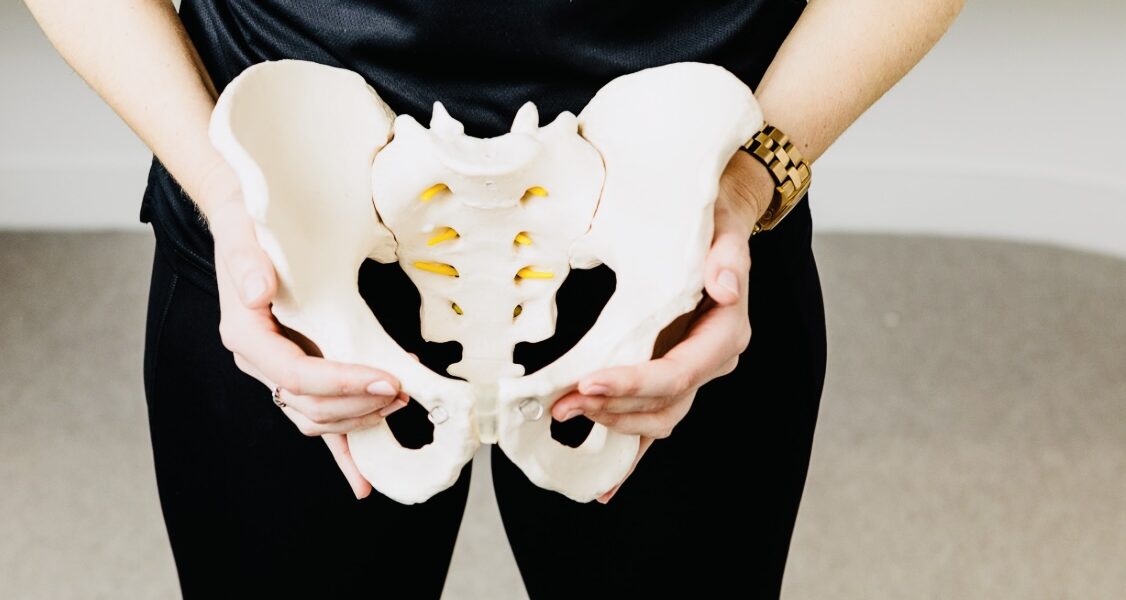By Sumaiya Farheen and Andrew Siyabalawatte, Dec 2023.

Welcome to Your Simplified Guide to Pelvic Mechanics
In this blog post, we’re demystifying pelvic issues like torsion and twisted pelvis, making it easy to understand and apply insights for a better daily life.

“A twisted pelvis” refers to an abnormal rotation or displacement of pelvic bones, disrupting their usual alignment. This deviation can cause discomfort and affect daily movements.
Pelvic Torsion
Pelvic torsion, characterized by an abnormal rotation of one hip either forward or backward in relation to the other, can lead to issues with posture and movement.
How Does It Impact You?

In the centre at the front, the two pubic bones are joined by a cartilage known as the pubic symphysis. There are many ligaments that bind these bones to form joints, which very tightly, maintain the stability of the pelvic girdle.
Twisted Pelvis Symptoms
Sitting correctly and protecting the lumbar spine can lead to improvements throughout the whole spine and even your head and neck position too.
The slightly down thigh posture with slightly anterior pelvic tilt can take the stress off the joints in the lower back and place the discs in their middle position.
Click here to read more on how to sit and prevent back pain.
Is a Twisted Pelvis Painful
The RALF pattern – is the significant player in the world of pelvic torsion. RALF stands for Rotation, Anterior tilt, Lateral tilt, and Flexion. Sounds complex? Don’t worry, we’re here to simplify it.
Poor Posture
A major cause of a rotated pelvis, can involve a restriction in the sacroiliac joints brought on by tightness in the primary hip flexors – the Iliacus and the psoas major.
Physical therapy looks to address these issues arising from a restricted and rotated pelvis, helping to restore it back to its neutral position with treatment and exercise.
Pregnancy Pelvic Pain
Pregnancy-related pelvic girdle pain (PGP) or symphysis pubis dysfunction (SPD) is discomfort caused by stiffness or uneven movement in the pelvic joints.
Treatment through physiotherapy aims to relieve or ease pain, improve muscle function, and improve your pelvic joint position and stability.
Massage treatment can alleviate muscle strains and spasms in the groin, buttock, or back, and lengthen muscles around the pelvis to help your body adapt to the increasing weight of your baby.
Twisted Pelvis Chiropractor

Osteopaths and Chiropractors offer myofascial manipulation to help with improving movement in a twisted pelvis. Myofascial manipulation focuses on reducing pain by easing the tension and tightness in the trigger points, offering relief from pelvic pain.
Causes Of Pelvic Misalignment
Have you been dealing with persistent back, hip, knee or foot pain? Your body could be signaling that your pelvis is not in its happy place. Our two step assessment pathway helps to unravel the mystery behind those symptoms, helping you understand the connection between your pelvis and your symptoms.
Twisted Pelvis Exercises
No need for an expensive gym membership or complicated equipment. We’ve got your back (and pelvis) covered with key exercises that you can do in the comfort of your home. These exercises are designed to support your pelvic health journey without the need for fancy setups – just you and a commitment to feeling better.

The Bridge Exercise-
Start by lying on your back with knees bent and feet hip-width apart.
Lift your hips toward the ceiling, creating a straight line from your shoulders to your knees.
Squeeze your glutes at the top and hold for a moment.
Lower your hips back down and repeat for a set of 10-12 repetitions.
Child’s Pose-
Begin on your hands and knees in a tabletop position.
Sit back on your heels, reaching your arms forward on the floor.
Allow your chest to sink toward the floor, feeling a stretch in your lower back and pelvis.
Hold for 20-30 seconds, breathing deeply.
Twisted Pelvis Treatment
At Back To Health Wellness, we specialize in providing treatments tailored to your needs. Our team of experts understands the nuances of pelvic health and is dedicated to guiding you on a path to lasting relief.
As you’ve explored the simplicity of key exercises and the relief found in pandiculation, imagine the transformative impact of personalized, hands-on care. Our clinic is not just a destination, it’s a partner in your journey toward optimal pelvic well-being.
Don’t let pelvic discomfort be a lingering puzzle – let us be the missing piece. Schedule your visit to today and experience firsthand the expertise that can make your pelvic health journey truly remarkable.
Here’s to a life of comfort, mobility, and the confidence that comes with a healthier you.

